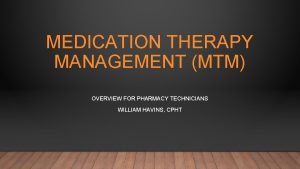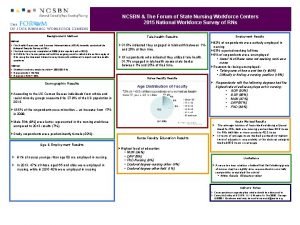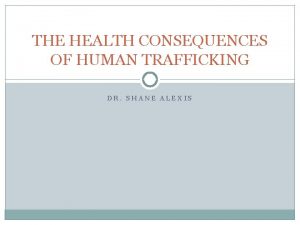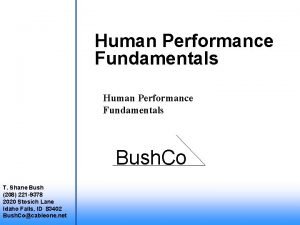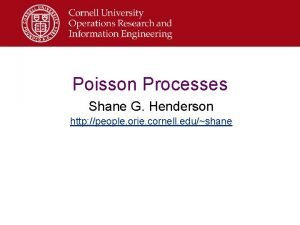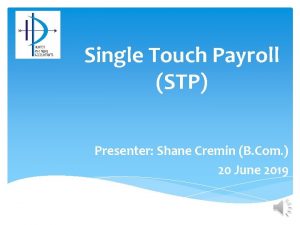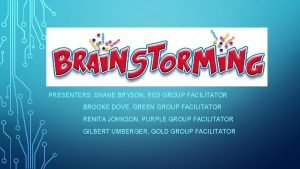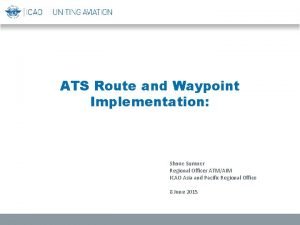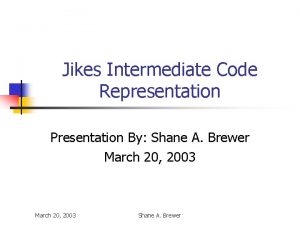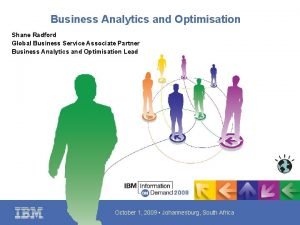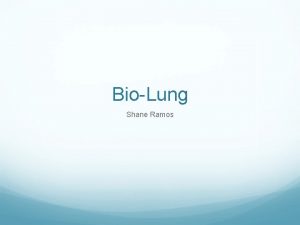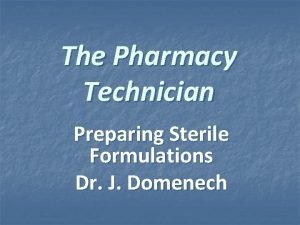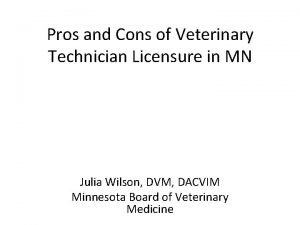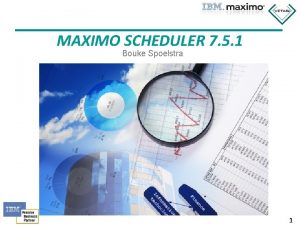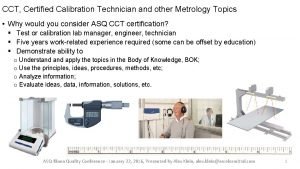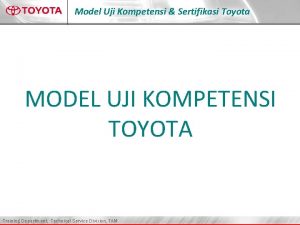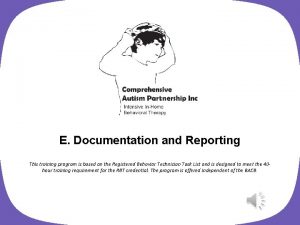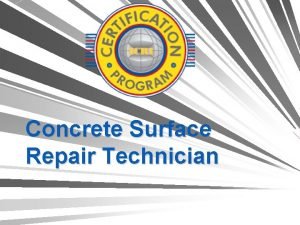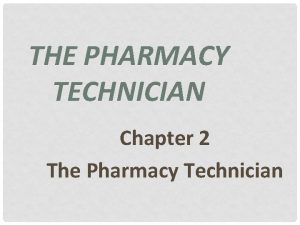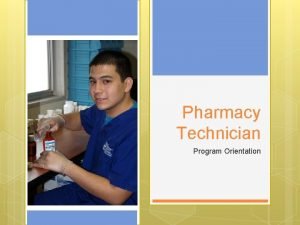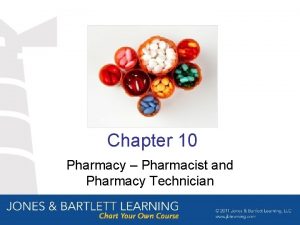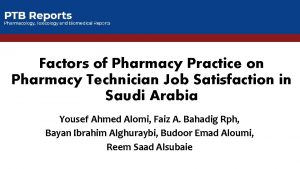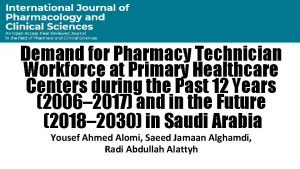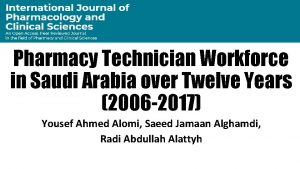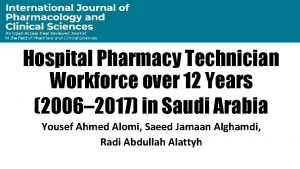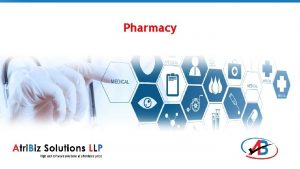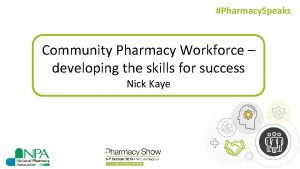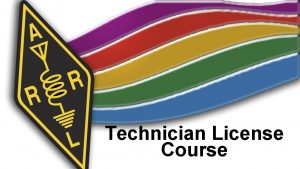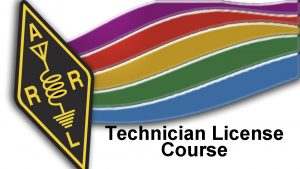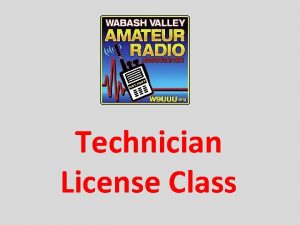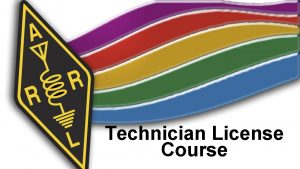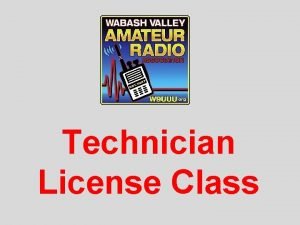2015 National Pharmacy Technician Workforce Study Shane P













































- Slides: 45

2015 National Pharmacy Technician Workforce Study Shane P. Desselle, RPh, Ph. D, FAPh. A President, Applied Pharmacy Solutions Professor, Touro University California College of Pharmacy 1

Background and Rationale

Background and Rationale • Recent Evolutions in Pharmacy Practice and the Role of the Pharmacist • • • Medication Therapy Management Comprehensive Medication Management Public Health Patient-Centered Care Interprofessional Education/Interprofessional Practice Pharmacists’ Education, Skills and Attitudes Organizational Culture Pharmacy Logistical Enhancements and Constraints Pharmacy Practice Acts • Evolution in the profession would suggest that the roles and preparation of pharmacy support personnel have shifted

Background and Rationale • There have been calls for the study and advancement of the professional careers of pharmacy technicians for over a decade • The profession is beginning to recognize pharmacy technicians’ responsibilities and the potential for advanced roles • Education, training, and experience of pharmacy technicians remain largely unstandardized • More states requiring regulation of pharmacy technicians • Pharmacy technician research is limited • Study Funders: Pharmacy Technician Accreditation Commission (PTAC), Pharmacy Technician Certification Board (PTCB), and Pharmacy Workforce Center (PWC) • Study Principal Investigators: Shane P. Desselle, RPh, Ph. D, FAPh. A (Touro-California) and Erin R. Holmes, Ph. D (University of Mississippi)

Objectives

Study Objectives • Describe characteristics of CPh. Ts, their current job functions in various practice settings, and their reasons for becoming a technician • Determine primary methods of training • Determine the level of satisfaction with various intrinsic and extrinsic components of CPh. Ts’ jobs; identify sources contributing most to that satisfaction • Identify CPh. Ts’ employer and profession commitment, along with their ensuing, anticipated career moves • Identify sources of stress for CPh. Ts • Identify relationships between CPh. Ts’ job functions, satisfaction stress, commitment, stress, and reason for becoming a technician

Study Methods

Qualitative Phase • Purpose: to inform subject areas for the quantitative phase and provide richness of information about CPh. T quality of work life not described previously in the literature • Semi-structured, in-depth interviews using a convenience sample • Initial Questions • Impetus for becoming a pharmacy technician • Perception of preparedness for current job • Job responsibilities, perceptions of importance, need for change • Sources of stress and satisfaction • View of being a technician as a career (versus a job) • Mechanisms of recognition by employer Future plans; facilitators of loyalty • $20 gift cards for participants

Quantitative Phase • Questionnaire Survey (Online) • Pilot-Testing • Convenience sample (n=18), with 12 completing the survey • Average time of completion: 12 -14 minutes • Ease of completion and salience of survey questions was validated • Survey • Sample size calculations produced the need for 384 responses • 5, 000 email addresses acquired from PTCB • Modified Dillman Survey Method • Pre-notification email, email with survey link, two email reminders with survey link

Results

Qualitative (Semi-structured, In-depth Interviews) • 21 participants • 19 Females, 2 Males • Most from community (mix of independent and chain pharmacy) • Answers categorized coded into themes • Career Impetus • Job Responsibilities • Quality of Work Life • Equitable Partnership

Career Impetus • Began in another job in a pharmacy or health care organization • Pharmacists and peers were effective at recruiting technicians into this career • Technicians came from varied backgrounds • College degrees, training or education in sociology, communication and other fields • Many were uninspired in their past career and sought a profession where one could help other people

Job Responsibilities • View themselves as the “Face” of the pharmacy • Assisting the pharmacist to provide the best care possible for patients • Completing paperwork and talking to various stakeholders on the phone • There are very few responsibilities/functions that technicians view they do not carry out, and they stay busy most of the time

Quality of Work Life • It was asserted that many patients might not understand everything that technicians do for them, but that it is tremendously satisfying when they [patients] do, or at least show appreciation for the technician trying their best • Patients were reported to often be the biggest source of stress, yet were also the biggest source of satisfaction for technicians • The concept of job variety was mentioned on more than one occasion • A number of technicians reported that they feel each and every day is different and that this is a source of satisfaction • Technicians indicated that when the pharmacy is short-staffed for whatever reason, it can make for a stressful situation

Equitable Partnership • Technicians reported that they would like to remain in their jobs but would like to see creative ways to incent them into higher positions and wages • Technicians reported that some peers do not carry their weight and that perhaps more can be done to ameliorate the situations when this occurs • Many technicians saw their work as a partnership between them and their employer, stating that if they [employers] treat them fairly, then in turn they will give back their [technicians’] full effort, trust, and cooperation

Quantitative Survey Respondent Characteristics • 702 CPh. Ts completed the survey • 516 (75. 2%) were currently employed as a technician • 412 full-time • 67 part-time > 20 hrs/week • 37 part-time < 20 hrs/week • • 73 (10. 6%) were employed in another pharmacy- or health-related field 39 (5. 6%) were unemployed and looking for work 20 (2. 9%) were unemployed and not seeking work 8 (1. 2%) were retired • Gender • Females 433 (85. 4%) • Males 74 (14. 6%) • Average = 40. 2 years • Average experience with current employer = 7. 90 years • Average experience as a technician = 11. 30 years

Quantitative Survey Respondent Characteristics • Geographic Location • • • West Southeast Northeast Midwest Texas 121 (23. 7%) 141 (27. 6%) 59 (11. 5%) 150 (29. 4%) 40 (7. 8%) • Rurality • • Rural 61 (11. 9%) Small city 133 (26. 0%) Suburb of larger city 150 (29. 4%) Medium-sized or large city urban core 167 (32. 7%)

Respondents’ Primary Practice Setting • Large chain pharmacy 144 (28. 0%) • Mail order pharmacy 11 (2. 1%) • Hospital/health system (inpatient) 122 (23. 7%) • Specialty pharmacy 11 (2. 1%) • Mass merchandiser 46 (8. 9%) • Small chain pharmacy 08 (1. 6%) • Independent community pharmacy 40 (7. 8%) • Government/military 08 (1. 6%) • Supermarket pharmacy 35 (6. 8%) • Ambulatory care (not a dispensing pharmacy) 04 (0. 8%) 22 (4. 3%) • Hospital/health system (outpatient) • Nursing home/long-term care • Clinic-based pharmacy • Home health/infusion 18 (3. 5%) • Pharmacy technician training program (e. g. , vocational school) 01 (0. 2%) 13 (2. 5%) 12 (2. 3%) • Pharmaceutical industry • Other 01 (0. 2%) 06 (1. 2%)

Requirement to Become Certified • Required for the current job, as a whole: • 358 (69. 8%) • Required by State: • 199 (39. 4%) • Required by employer: • 324 (63. 2%)

Reasons for Becoming A Technician* Community General interest in pharmacy and/or health career Hospital All 188 (67. 4%) 97 (64. 5%) 333 (65. 7%) Recommendation of a friend, colleague, or family member 71 (24. 8%) 35 (24. 3%) 127 (24. 6%) Recruitment or encouragement by a pharmacist 49 (17. 1%) 21 (14. 6%) 77 (14. 9%) Work schedule/flexibility 40 (14. 0%) 15 (10. 4%) 63 (12. 2%) Salary 41 (14. 3%) 19 (13. 2%) 83 (16. 1%) Benefits 19 (6. 6%) 22 (15. 3%) 51 (9. 9%) Fulfilling career 41 (14. 3%) 20 (13. 9%) 75 (14. 6%) Exposure by working at a different job in a pharmacy organization 39 (13. 6%) 25 (17. 4%) 76 (14. 8%) Work at a previous employer, technician-related 17 (5. 9%) 9 (6. 3%) 35 (6. 8%) An opportunity to serve the public 45 (15. 7%) 19 (13. 2%) 72 (14. 0%) A desire to help people 121 (42. 3%) 46 (31. 9%) 196 (38. 0%) *Respondents could select up to 3 choices

Respondents’ Method of Training* Community Hospital All OJT 1 from employer 233 (81. 5%) 104 (72. 2%) 395 (76. 6%) Self-guided training 105 (36. 7%) 40 (27. 8%) 168 (32. 6%) Structured training program from employer, unaccredited 46 (16. 1%) 17 (11. 8%) 75 (14. 5%) Structured training program from employer, accredited 26 (9. 1%) 10 (6. 9%) 43 (8. 3%) Structured training program from, unsure of accreditation status 19 (6. 6%) 6 (4. 2%) 29 (5. 6%) Standalone training program (vocational school), Unaccredited 17 (5. 9%) 8 (5. 6%) 29 (5. 6%) Standalone training program (vocational school), Accredited 46 (16. 1%) 27 (18. 8%) 89 (17. 2%) Standalone training program (vocational school), Unsure of Accreditation 24 (8. 4%) 20 (13. 9%) 53 (10. 3%) 1 OJT: On-the-Job Training *Respondents could select up to 3 choices

Helpfulness of Education/Training Modality in Preparation for Current Work Responsibilities* Community Hospital All 3. 30± 0. 96 3. 20± 1. 02 3. 21± 1. 03 PTCB or similar certification 3. 36± 0. 79 3. 25± 0. 03 3. 32± 0. 85 Work at a previous employer, technician-related 3. 55± 0. 82 3. 51± 0. 85 3. 49± 0. 09 Work at a previous employer, not as a technician 2. 48± 1. 12 2. 54± 1. 17 2. 46± 1. 14 Formal OJT from employer 3. 55± 0. 74 3. 57± 0. 76 3. 53± 0. 78 Guidance and mentorship from supervisor(s) 3. 52± 0. 76 3. 43± 0. 89 3. 44± 0. 85 Guidance and mentorship from peer technicians 3. 49± 0. 80 3. 46± 0. 83 3. 45± 0. 84 Formal training/education program at a college or vocational school *4 -point scale of "helpfulness“ (1=Not helpful at all, to 4=Very helpful)

Number & Proportion Who Rated Training Source As “Very Helpful”* Formal training/education program at a college or vocational school PTCB or similar certification Community Hospital All 79 (59. 2%) 44 (53. 7%) 144 (54. 1%) 136 (52. 3%) 66 (52. 4%) 243 (52. 5%) Work at a previous employer, technician-related 99 (70. 7%) 68 (69. 4%) 211 (69. 2%) Work at a previous employer, not as a technician 43 (23. 9%) 24 (29. 3%) 79 (24. 7%) Formal OJT from employer 163 (68. 5%) 82 (69. 5%) 286 (67. 3%) Guidance and mentorship from supervisor(s) 160 (65. 6%) 76 (63. 3%) 272 (62. 2%) Guidance and mentorship from peer technicians 154 (64. 4%) 77 (63. 6%) 268 (62. 5%) *Selected "4" on the 4 -point scale (Very Helpful)

Community CPh. Ts’ Level of Involvement, Perceived Importance to Them, and to the Employer Receive prescriptions Collect or communicate patient information Involvement* 2. 85± 0. 46 2. 87± 0. 29 Assess prescription for completeness, accuracy, authenticity, legality, or reimbursement eligibility Importance** 3. 69± 0. 57 3. 78± 0. 48 2. 80± 0. 49 Importance to Employer** 3. 59± 0. 63 3. 58± 0. 61 3. 77± 0. 53 Input a prescription 2. 84± 0. 46 3. 75± 0. 54 3. 60± 0. 65 Provide prescription to patient or caregiver 2. 66± 0. 69 3. 53± 0. 82 3. 45± 0. 83 Direct patient to pharmacist for counseling 2. 72± 0. 62 3. 67± 0. 65 3. 57± 0. 67 Identify medications and supplies to be ordered or manage inventory 2. 70± 0. 62 3. 66± 0. 63 3. 50± 0. 74 Use and maintain automated technology 2. 59± 0. 71 3. 44± 0. 92 3. 29± 0. 93 Communicate with insurance companies to determine coverage for prescriptions & services 2. 72± 0. 62 3. 63± 0. 74 3. 45± 0. 80 Fill/label a prescription 2. 89± 0. 40 3. 77± 0. 53 3. 58± 0. 66 Verify the work of other technicians 2. 26± 0. 79 3. 34± 0. 96 3. 23± 0. 96 *Measured on a 3 -point scale from 1=not at all involved, to 3=involved very frequently **Measured on a 4 -point scale from 1=very little to no importance, to 4=Very important 3. 61± 0. 51

Community Pharmacy CPh. T Task/Activity Involvement • A relatively high level of involvement in each activity under evaluation • Confirmed qualitative research results • Viewed all activities with high level of importance • Slight discrepancies between importance and perceived importance to employer, especially for collecting patient information, assessing prescription, managing inventory, and inputting prescriptions

Hospital/Health System CPh. Ts’ Level of Involvement, Perceived Importance to Them, and to the Employer Involvement* Importance** Importance to Employer** Replenish unit dose carts 2. 34± 0. 86 3. 20± 1. 00 2. 98± 0. 98 Restock floor stock and/or automated dispensing cabinets 2. 80± 0. 55 3. 59± 0. 70 3. 24± 0. 88 Compound sterile preps (excluding chemo) 2. 57± 0. 72 3. 57± 0. 85 3. 19± 0. 94 Compound chemo preps 1. 62± 0. 84 3. 12± 1. 15 3. 06± 1. 06 Order entry activities 1. 71± 0. 85 2. 79± 1. 16 2. 73± 1. 21 Purchasing/inventory management 1. 98± 0. 85 3. 19± 1. 04 3. 03± 0. 97 Information technology system management 1. 73± 0. 80 2. 83± 1. 14 2. 76± 1. 11 Controlled substance system management 2. 12± 0. 79 3. 38± 0. 98 3. 19± 0. 95 Supervision of other technicians 1. 96± 0. 85 3. 12± 1. 03 2. 87± 1. 08 Checking dispensing of other techs 1. 78± 0. 86 2. 73± 1. 22 2. 56± 1. 24 Billing 1. 71± 0. 88 2. 69± 1. 26 2. 76± 1. 20 *Measured on a 3 -point scale from 1=not at all involved, to 3=involved very frequently **Measured on a 4 -point scale from 1=very little to no importance, to 4=Very important

Hospital/Health System CPh. Ts’ Level of Involvement, Perceived Importance to Them, and to the Employer (continued) Involvement* Importance** Import to Employer** Criteria-based screening of medical records to identify med-related problems 1. 49± 0. 78 2. 64± 1. 19 2. 62± 1. 20 Preparation of clinical monitoring info for pharmacist review 1. 39± 0. 71 2. 57± 1. 25 2. 49± 1. 18 Dispensing meds with remote video supervision 1. 20± 0. 55 2. 12± 1. 24 2. 20± 1. 24 Medication assistance program management 1. 28± 0. 62 2. 32± 1. 24 2. 34± 1. 22 Initiation of med reconciliation 1. 43± 0. 74 2. 62± 1. 20 2. 51± 1. 17 Quality assurance activities/ unit inspections 2. 48± 0. 72 3. 32± 0. 90 3. 14± 0. 93 Packaging/repackaging activities 2. 43± 0. 72 3. 29± 0. 95 3. 03± 1. 00 Facilitating transitions of care 1. 61± 0. 84 2. 73± 1. 21 2. 66± 1. 18 *Measured on a 3 -point scale from 1=not at all involved, to 3=involved very frequently **Measured on a 4 -point scale from 1=very little to no importance, to 4=Very important

Hospital/Health System CPh. T Task/Activity Involvement • The range of tasks/activities and level of involvement much more varied than was the case for community pharmacy CPh. Ts • Highest level of involvement in floor stock, quality assurance, sterile compounding, repackaging, and controlled substance system management • Lowest in dispensing meds with remote video supervision, medication assistance program involvement, preparation of clinical monitoring information, and screening of medical records • Largest gaps between self-ascribed importance and perceived importance by the employer found in regard in compounding non-sterile products (excluding chemotherapy), repackaging activities, supervision of other technicians, and replenishing unit dose carts

CPh. T Satisfaction with Various Facets of their Job Community Hospital Total* Work schedule 4. 60± 1. 23 4. 64± 1. 37 4. 68± 1. 26 Pharmacist co-workers 4. 84± 1. 17 4. 59± 1. 27 4. 78± 1. 91 Pharmacy technician co-workers 4. 62± 1. 16 4. 18± 1. 30 4. 51± 1. 20 Workload 4. 17± 1. 38 3. 90± 1. 42 4. 15± 1. 37 Pay/wages 3. 40± 1. 49 3. 37± 1. 50 3. 47± 1. 48 Opportunity to use your knowledge 4. 79± 1. 11 4. 35± 1. 35 4. 61± 1. 23 Opportunity for advancement 3. 54± 1. 54 3. 11± 1. 52 3. 44± 1. 54 Employee benefits 3. 86± 1. 50 4. 25± 1. 44 4. 00± 1. 49 Level of stress 3. 30± 1. 51 3. 45± 1. 49 3. 41± 1. 49 Fair treatment from management 4. 10± 1. 44 3. 65± 1. 49 3. 99± 1. 48 *Measured on a six-point scale from 1=Very Dissatisfied, to 6=Very Satisfied; Mean±standard deviation; Total represents community, hospital, and all other.

Number & Proportion of CPh. Ts Reporting High Dissatisfaction with Various Facets of their Job Community Hospital Total* 14 (5. 9%) 10 (9. 1%) 28 (6. 7%) Pharmacist co-workers 11 (4. 6%) 9 (8. 2%) 23 (5. 5%) Work schedule Pharmacy technician co-workers 12 (5. 1%) 12 (10. 9%) 26 (6. 2%) Workload 29 (12. 2%) 19 (17. 3%) 53 (12. 7%) Pay/wages 65 (27. 4%) 33 (30. 0%) 111 (26. 6%) Opportunity to use your knowledge 11 (4. 6%) 14 (12. 7%) 33 (7. 9%) Opportunity for advancement 63 (26. 6%) 41 (37. 3%) 124 (29. 7%) Employee benefits 45 (10. 0%) 13 (11. 8%) 74 (17. 7%) Level of stress 74 (31. 2%) 27 (24. 5%) 116 (27. 8%) Fair treatment from Management 33 (13. 9%) 25 (22. 7%) 70 (16. 8%) *Total represents community, hospital, and all other

Contributors to CPh. T Stress Community Hospital Total* 3. 40± 0. 96 3. 29± 1. 14 3. 37± 1. 02 Being short-staffed 3. 73± 1. 06 3. 65± 1. 07 3. 63± 1. 09 Other employees not doing their fair share of work 3. 36± 1. 18 3. 80± 1. 09 3. 44± 1. 18 Disagreements with technician peers at my job 2. 24± 1. 14 2. 77± 1. 17 2. 38± 1. 15 Patients/customers/families who are rude or impatient 3. 05± 1. 10 2. 18± 1. 16 2. 67± 1. 20 Dealing with staff from other health care providers 2. 32± 0. 89 2. 26± 1. 04 2. 25± 0. 95 Inadequate technology, hardware, or other resources 2. 59± 1. 20 2. 66± 1. 25 2. 63± 1. 22 Poorly designed workflow and division of labor 2. 59± 1. 15 2. 99± 1. 31 2. 74± 1. 22 Lack of rest breaks, or time to take scheduled rest breaks 2. 70± 1. 32 2. 55± 1. 31 2. 54± 1. 29 The amount or volume of work *Measured on a five-point scale from 1=Little or no stress, to 5=A tremendous amount of stress; Mean±standard deviation; Total represents community, hospital, and all other.

CPh. Ts Reporting Highest Levels of Stress, by Factor/Facet of Work Community Hospital Total* 111 (47. 0%) 48 (43. 6%) 193 (46. 4%) Being short-staffed 140 (59. 3%) 71 (64. 5%) 240 (57. 7%) Other employees not doing their fair share of work 106 (44. 9%) 71 (64. 5%) 203 (48. 8%) Disagreements with technician peers at my job 39 (16. 5%) 28 (25. 5%) 73 (17. 5%) Patients/customers/families who are rude or impatient 75 (31. 8%) 14 (12. 7%) 98 (23. 6%) Dealing with staff from other health care providers 18 (7. 6%) 11 (10. 0%) 31 (07. 5%) Inadequate technology, hardware, or other resources 53 (22. 5%) 31 (28. 2%) 101 (24. 3%) Poorly designed workflow and division of labor 50 (21. 2%) 37 (33. 6%) 105 (25. 2%) Lack of rest breaks, or time to take scheduled rest breaks 68 (28. 8%) 25 (22. 7%) 97 (23. 3%) The amount or volume of work *Number and proportion of technicians reporting a “ 4” (high) or “ 5” (tremendous) amount of stress on a 5 -point scale, emanating from various sources of stress at their job. Total represents community, hospital, and all other.

CPh. T Commitment to Employer Plans to remain with current employer Community Hospital Total* < 2 years 49 (20. 8%) 15 (13. 6%) 78 (18. 8%) 2 -5 years 75 (31. 8%) 29 (26. 4%) 128 (30. 8%) 5 -10 years 38 (16. 1%) 21 (19. 1%) 70 (16. 8%) > 10 years 74 (31. 4%) 45 (40. 9%) 140 (33. 7%) Hospital Total* Characterization of commitment to current employer Community Looking to leave at first opportunity 20 (8. 5%) 6 (5. 5%) 31 (7. 5%) 31 (13. 2%) 18 (16. 4%) 57 (13. 7%) 100 (42. 6%) 39 (35. 5%) 166 (40. 0%) 84 (35. 7%) 47 (42. 7%) 161 (38. 8%) Does not feel much commitment and keeps options open Does not plan to change unless something unexpected happens Feels strong commitment and plans future with them for the long haul *Total represents community, hospital, and all other

CPh. T Commitment to Profession Plans to remain in career as a pharmacy technician Community Hospital Total* < 2 years 16 (06. 8%) 08 (07. 3%) 28 (06. 7%) 2 -5 years 62 (26. 3%) 17 (15. 5%) 99 (23. 8%) 5 -10 years 46 (19. 5%) 22 (20. 0%) 78 (18. 8%) > 10 years 112 (47. 5%) 63 (57. 3%) 211 (50. 7%) Characterization of plans to remain as a pharmacy technician Looking to leave this career, altogether Community 21 (08. 9%) Hospital 08 (07. 3%) Total* 38 (05. 2%) No plans currently, but might not take much for me to change 42 (17. 9%) 16 (14. 5%) 65 (15. 7%) In spite of challenges, I hope to make this a career for some time 87 (37. 0%) 44 (40. 0%) 154 (37. 1%) Completely committed to this career for my entire work life 85 (36. 2%) 42 (38. 2%) 158 (38. 1%) When ending work as a technician, I will. . . Community Hospital 103 (43. 8%) 66 (60. 0%) 204 (49. 2%) position 64 (27. 2%) 23 (20. 9%) 101 (24. 3%) Change to a non-health care position 23 (09. 8%) 05 (04. 5%) 41 (09. 9%) Attend a college or university 22 (09. 4%) 12 (10. 9%) 37 (08. 9%) Other 23 (09. 8%) 04 (03. 6%) 32 (07. 7%) Retire Total* Change to another type of health care *Total represents community, hospital, and all other

Additional Analyses • Higher commitment (profession & employer) reported by those working more hours/week • Females reported higher levels of employer and especially profession commitment • Higher profession commitment reported by those who became a technician through recommendation of a friend or due to a desire to help people

Additional Correlation Analyses • Job satisfaction very highly correlated with employer commitment and highly, yet inversely correlated with stress • Satisfaction is highly correlated with commitment to the profession • There also strong relationships with perceived usefulness of supervisor mentoring, OJT, and peer mentoring • Stress levels are inversely correlated with employer and profession commitment • Stress is not associated with perceived usefulness of training • Satisfaction is important, but not the sole factor contributing to commitment.

Geographic Considerations • Slightly higher levels of job satisfaction reported by CPh. Ts from Texas and from West regions • More CPh. Ts from Texas and from West are required to be certified • Higher use of OJT reported from those in Midwest and Northeast regions • In community pharmacy, those in Texas and Southeast regions more involved in verifying the work of other technicians • In hospital pharmacy, those from West & Midwest regions more likely involved in floor stock and related activities • All respondents from Northeast region involved in sterile compounding • CPh. Ts from West more likely involved in management of medication distribution and other systems

Additional Findings with Regard to Practice Setting • In Community Pharmacy: • CPh. Ts more involved in patient counseling reported higher stress • CPh. Ts involved in the use of technology reported higher profession commitment • In Hospital/Health-systems Pharmacy: • Higher stress was reported by those CPh. Ts involved in compounding chemotherapeutic agents and in criteria-based screening of medication records • Lower stress reported by those involved in purchasing activities • CPh. Ts with higher involvement in floor stock maintenance, inventory management, controlled substance management, billing activities, and repackaging reported higher levels of profession commitment

Usefulness of Training Correlates with Other Variables • Satisfaction highly correlated with employer & profession commitment and highly inversely correlated with stress • Strong associations/correlations between perceived utility of education/training modality with satisfaction, stress, and commitment. Thus, if a technician perceived usefulness of any of these training methods, then he/she would more likely be satisfied, more committed, and less stressed on the job

Study Limitations and Strengths • The low response rate of the survey limits generalizability to the entire CPh. T population • Only technicians certified through PTCB were sampled • Responses might have come more readily from those with either very favorable or very unfavorable attitudes toward their jobs/careers • The use of a randomized sampling procedure across an entire nation of CPh. Ts provides representativeness, and the proportion of respondents across practice setting, gender, age, and geographic location were commensurate with expectations • Responses to the quality of work life questions aligned with expectations • Psychometric evaluation of responses demonstrated very good internal consistency reliability and construct validity • The results of the semi-structured, in-depth interviews are subject to the limitations inherent to use of this approach • These interviews were used to provide richness in information and to induce theory • The resultant data are not meant to be generalizable beyond the small sample of respondents.

Discussion Points • CPh. Ts perform a large array of functions. There might be opportunity for more engagement in certain functions, particularly in the hospital/health system setting • Involvement in certain functions associated with greater commitment, satisfaction, and stress. Management of systems activities often associated with greater satisfaction and commitment • CPh. Ts often entered the profession due to the desire to be in a healthcare field and for wanting to help people. Many were recruited successfully by a pharmacist; pharmacists and peers might be effective in future recruitment strategies

Discussion Points • While OJT, peer mentorship, and previous experience were deemed most helpful, all types of training/education evaluated were deemed quite helpful, including PTCB certification • The more helpful the training, the better quality of work life outcomes reported • While CPh. Ts reported relatively high levels of commitment, there a number of them who indicated that it might not take that much for them to leave their employer, primarily, and the profession, secondarily • CPh. Ts reported lower satisfaction with rate of pay, level of stress, and opportunities for advancement

Discussion Points • While mostly consistent, there a few differences across practice setting with regard to satisfiers and stressors on the job • CPh. Ts reported satisfaction with ability to use their knowledge. The ability to use one’s knowledge deemed very important for commitment and other quality of work life issues • There are some regional differences in CPh. T practice functions, and this bears out in their reported commitment and quality of work life

Conclusion

Q&A
 Mtm pharmacy technician
Mtm pharmacy technician Cec ilac
Cec ilac National forum of state nursing workforce centers
National forum of state nursing workforce centers Dr shane bush
Dr shane bush Dr shane barclay
Dr shane barclay Shane lunceford
Shane lunceford Human performance fundamentals
Human performance fundamentals Shane swenson
Shane swenson Shane toolan
Shane toolan Shane chaplin
Shane chaplin Shane plante
Shane plante Shane palmer concreting
Shane palmer concreting Shane henderson cornell
Shane henderson cornell Shane monks barrister
Shane monks barrister Shane harrison and esther beckley
Shane harrison and esther beckley Shane mills md
Shane mills md Single touch payroll sap
Single touch payroll sap Shane bryson
Shane bryson Shane johnson ucl
Shane johnson ucl Dr shane kennedy
Dr shane kennedy Paul degen barclays
Paul degen barclays Shane sonderman
Shane sonderman Shape of p orbital in chemistry
Shape of p orbital in chemistry Dr stephanie shane
Dr stephanie shane Shane sumner
Shane sumner Shane barclay md
Shane barclay md Shane steward
Shane steward Bolar splint
Bolar splint Shane code ff
Shane code ff Radford data and analytics
Radford data and analytics Shane pearlman
Shane pearlman Biolung
Biolung Shane barrett
Shane barrett What is coring in pharmacy
What is coring in pharmacy How long must a technician evacuating refrigerant
How long must a technician evacuating refrigerant Pros and cons of being a veterinary technician
Pros and cons of being a veterinary technician Maximo technician scheduling
Maximo technician scheduling Calibration technician courses
Calibration technician courses Transport technician healthcare pathway
Transport technician healthcare pathway Radar and sonar technician career cluster
Radar and sonar technician career cluster Technician a says that the bulb trade number
Technician a says that the bulb trade number Toyota technician certification
Toyota technician certification Micromain mobile
Micromain mobile Roles of a planner
Roles of a planner Rbt soap note example
Rbt soap note example Surface repair technician training
Surface repair technician training
